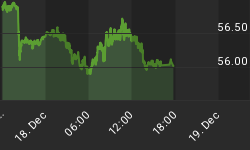We all know the denizens of the markets include Bears, Bulls and Pigs. The latter are those who stay too long or who reach for the extra yield.
Decades ago, Investors Intelligence sentiment summaries were colloquially divided into Bears, Bulls and Chickens. The latter were letter writers who were undecided and calling for no change.
In checking our Concise Oxford Dictionary, it has bear as a verb:
"To speculate for a fall on the Stock Exchange."
However, the best definition of a bear as a noun is in Johnson's Dictionary, published in 1755:
"A description of stock-jobbers, who sell unreal stock."
During the early summer, a number of stocks and stock exchanges achieved unrealistic expectations. But Johnson elegantly described selling something that did not exist.
Birds are critters in the markets as well, with markets soaring like eagles. Severe financial crashes leave behind "Lame Ducks", which term was used in London during the 1700s.
This can be the season when "The chickens come home to roost". Of course, the "Vulture Funds" are waiting.
And then there was the huge oil boom that blew out in 1980 and crashed over most of the next decade. The governor of Texas observed that during the mania, some had thought that the official state bird should be the building crane. But, in recognizing the disaster it should be the turkey.
Of course, the establishment can never understand where the money goes in a bust. At one hearing the judge asked a young and former hot-shot banker about this. As reported in the Wall Street Journal "Well, we spent it on wine women and song. The rest we just pissed away."
Sheep and lemmings are often found in the financial markets. And virtually every city in North America has a list of plaguey critters. Including Canadian cities, there are urban bears, urban coyotes, urban racoons, urban skunks and urban socialists.
The latest to the list of critters in the markets would be the patron bird of short-sellers.
The Nuthatch
(genus Sitta, family Sittidae)

They make their living upside down.















